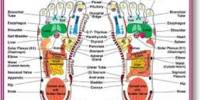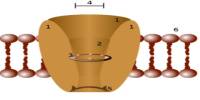According to research published in JAMA, the combination of the hypertension medicine enalapril and folic acid, compared to enalapril alone, significantly reduced the risk of the first stroke in more than 20,000 adults in China with the high blood pressure but no history of stroke or heart attack.
The findings of the study will be presented at the American College of Cardiology’s Annual Scientific Session. Stroke is China’s greatest cause of mortality and the world’s second leading cause of death.
Strokes are medical emergencies that require immediate attention. The sooner a stroke victim receives care, the less damage is likely to occur. Medication is frequently used to treat strokes. Medicines that prevent and dissolve blood clots, lower blood pressure, and lower cholesterol levels are included.
Because 77 percent of strokes are first events, primary prevention (prevention before a first episode) is especially crucial. According to the article’s background material, there is still uncertainty about the efficacy of folic acid therapy for primary stroke prevention due to limited and inconsistent data.
B vitamin is folic acid, and it is used by our body to create new cells; consider the skin, hair, and nails. Every day, new cells are formed in these and other regions of the body. Folic acid is a synthetic (i.e., non-natural) type of folate that is found in supplements and fortified foods such as rice, pasta, bread, and some morning cereals.
Yong Huo, M.D., of Peking University First Hospital, Beijing, China, and colleagues had 20,702 adults with hypertension without a history of stroke or heart attack randomly assigned to receive daily treatment with a single-pill combination containing enalapril (10 mg) and folic acid (0.8 mg; n = 10,348), or a tablet containing enalapril alone (10 mg; n = 10,354).
The trial took place in 32 townships in China’s Jiangsu and Anhui provinces from May 2008 to August 2013. Variations in the MTHFR C677T gene (CC, CT, and TT genotypes) that may impact folate levels were evaluated in participants.
The first stroke occurred in 282 people (2.7%) in the enalapril-folic acid group compared to 355 participants (3.4%) in the enalapril group over a median treatment period of 4.5 years, representing an absolute risk reduction of 0.7 percent and a relative risk reduction of 21%.
The CSPPT is the first large-scale randomized trial to test the hypothesis using individual measures of baseline folate levels. In this population without folic acid fortification, we observed considerable individual variation in plasma folate levels and clearly showed that the beneficial effect appeared to be more pronounced in participants with lower folate levels.
The risk of ischemic stroke (2.2 percent vs. 2.8 percent) and composite cardiovascular events (cardiovascular mortality, heart attack, and stroke) were also significantly lower in the enalapril-folic acid group (3.1 percent vs. 3.9 percent).
The risk of hemorrhagic stroke, heart attack, or all-cause death, as well as the frequency of adverse events, were not significantly different across groups.
This trial (China Stroke Primary Prevention Trial; CSPPT), with data on individual baseline folate levels and MTHFR genotypes, has provided persuasive evidence that baseline folate level is a key determinant of folic acid therapy efficacy in stroke prevention, according to the authors.
“The CSPPT is the first large-scale randomized trial to test the hypothesis using individual measures of baseline folate levels. In this population without folic acid fortification, we observed considerable individual variation in plasma folate levels and clearly showed that the beneficial effect appeared to be more pronounced in participants with lower folate levels.”
“We speculate that even in countries with folic acid fortification and widespread use of folic acid supplements such as in the United States and Canada, there may still be room to further reduce stroke incidence using more targeted folic acid therapy in particular, among those with the TT genotype and low or moderate folate levels.”
Editorial: Folate Supplements for Stroke Prevention
“The trial by Huo et al has important implications for stroke prevention worldwide,” write Meir Stampfer, M.D., Dr.P.H., and Walter Willett, M.D., Dr.P.H., of the Harvard T. H. Chan School of Public Health and Channing Division of Network Medicine, Boston, in an accompanying editorial.
Despite the fact that the trial participants all had hypertension, there is little reason to doubt that the findings would also apply to normotensive people, albeit with a lesser absolute effect.
It’s possible to argue about the ethics of doing a replication experiment, especially when folic acid supplementation (or fortification) is both safe and economical, as well as having additional benefits.
Folate deficiency affects a large portion of the world’s population, potentially billions of people, including those in northern China, Bangladesh, and Scandinavia. Individuals with the TT genotype may benefit the most, yet genotyping for that purpose looks unlikely to be cost-effective.
Furthermore, certain Americans on the low end of the folate intake distribution may benefit; effects in this cohort would not have been observed in prior experiments. Food sources such as vegetables (particularly dark green leafy vegetables), fruits and fruit juices, nuts, beans, and peas would be ideal for obtaining appropriate folate levels.
However, for many people, obtaining enough levels only through diet is challenging due to cost or scarcity. Wherever possible, this analysis appears to favor fortification efforts, and supplementation should be considered where fortification takes longer to execute.
















